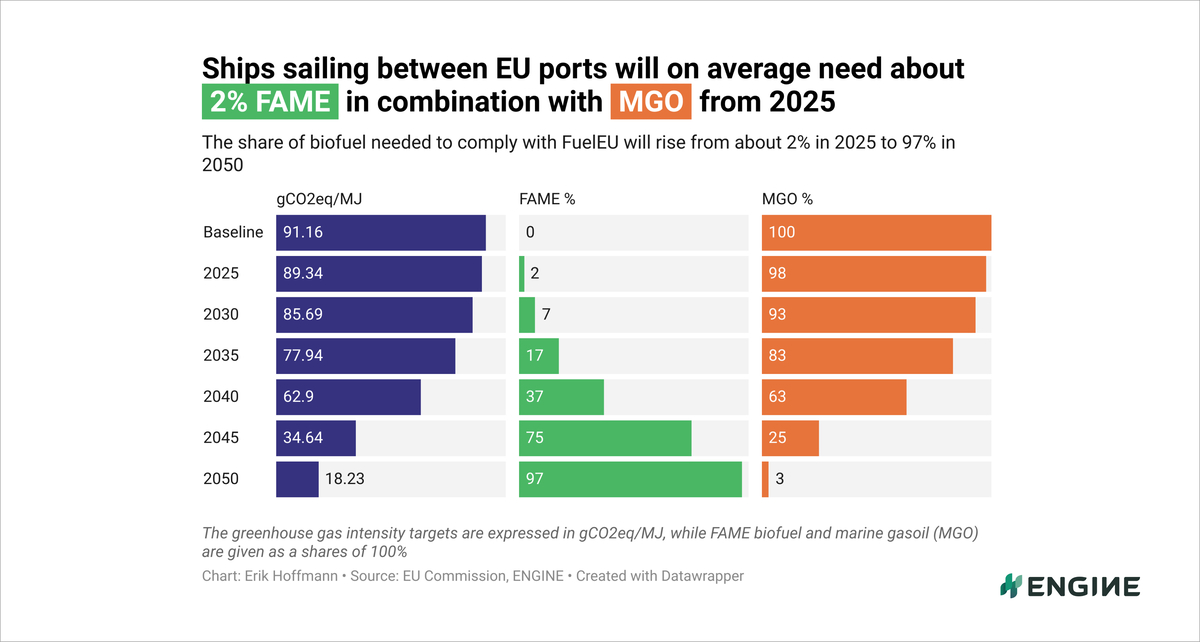Understanding FuelEU: How much biofuel do I need?
Bitesized answers to your key questions on FuelEU Maritime.

FuelEU Maritime is only a few days away and it should definitely be on the radar of shipping companies trading in the EU by now. There is no shortage of lengthy reports and infographics out there to explain the regulation. But for those in the industry who are not up for pouring over page after page, we offer a bitesized article series where we will explore key questions and clever ways to comply with FuelEU.
Many shipowners will doubtlessly have asked themselves:
How much biofuel do I need?
Well, that completely depends on what you will use the biofuel for. FuelEU Maritime, for example, doesn’t set a specific share of biofuel to be compliant. It’s not about a vessel’s individual voyages, but an average across its voyages during a calendar year. The target is a 2% reduction, but that doesn’t mean 2% biofuel. It means a 2% reduction in the greenhouse gas (GHG) intensity of the fuel used between two EU ports, and half that between an EU port and a non-EU port. That translates to around 3% biofuel blended with heavy fuel oils (HFO) such as HSFO or VLSFO, or 2% biofuel blended with MGO.

However, 3% or 2% biofuel blends are not smart options because it’s the average reduction across a pool of vessels throughout the year that counts. A vessel is much better served by taking 24%, 30% or even 100% biofuel on one vessel and transfer this vessel’s compliance surplus to make other vessels in that pool compliant before emission reports are due for verification in January 2026.
B24 (24% biofuel), B30 (30% biofuel) and pure B100 (100% biofuel) are more commonly stocked or blended by bunker suppliers. In the ARA, you will have access to B30 and B100 deliveries from most suppliers, while in other ports around the world B24 is the typical blend and suppliers will need an IMO II chemical tanker to hold and deliver blends above 25% biofuel.
It’s also important to note that the 3% bio-HSFO/VLSFO and 2% bio-MGO estimates are based on default GHG intensity factors from FuelEU Maritime, which references biofuel factors from the EU’s recast Renewable Energy Directive (RED II). They are not necessarily the actual values from the biofuel products bunker suppliers have on offer.
By Erik Hoffmann
Please get in touch with comments or additional info to news@engine.online






